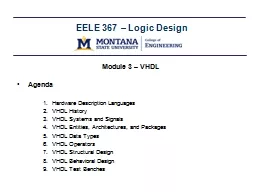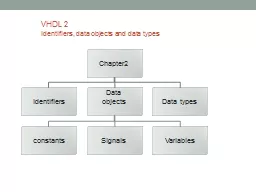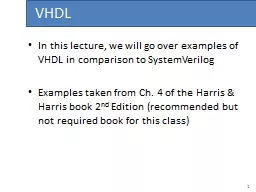PPT-Design Examples (Using VHDL)
Author : natalia-silvester | Published Date : 2017-04-11
UNITIV TOPICS COVERED Barrel Shifter Comparators Floatingpoint encoder dual parity encoder architecture barrel16behavioral of barrel16 is subtype DATAWORD is STDLOGICVECTOR15
Presentation Embed Code
Download Presentation
Download Presentation The PPT/PDF document "Design Examples (Using VHDL)" is the property of its rightful owner. Permission is granted to download and print the materials on this website for personal, non-commercial use only, and to display it on your personal computer provided you do not modify the materials and that you retain all copyright notices contained in the materials. By downloading content from our website, you accept the terms of this agreement.
Design Examples (Using VHDL): Transcript
Download Rules Of Document
"Design Examples (Using VHDL)"The content belongs to its owner. You may download and print it for personal use, without modification, and keep all copyright notices. By downloading, you agree to these terms.
Related Documents











![[BEST]-HDL with Digital Design: VHDL and Verilog](https://thumbs.docslides.com/987211/best-hdl-with-digital-design-vhdl-and-verilog.jpg)


